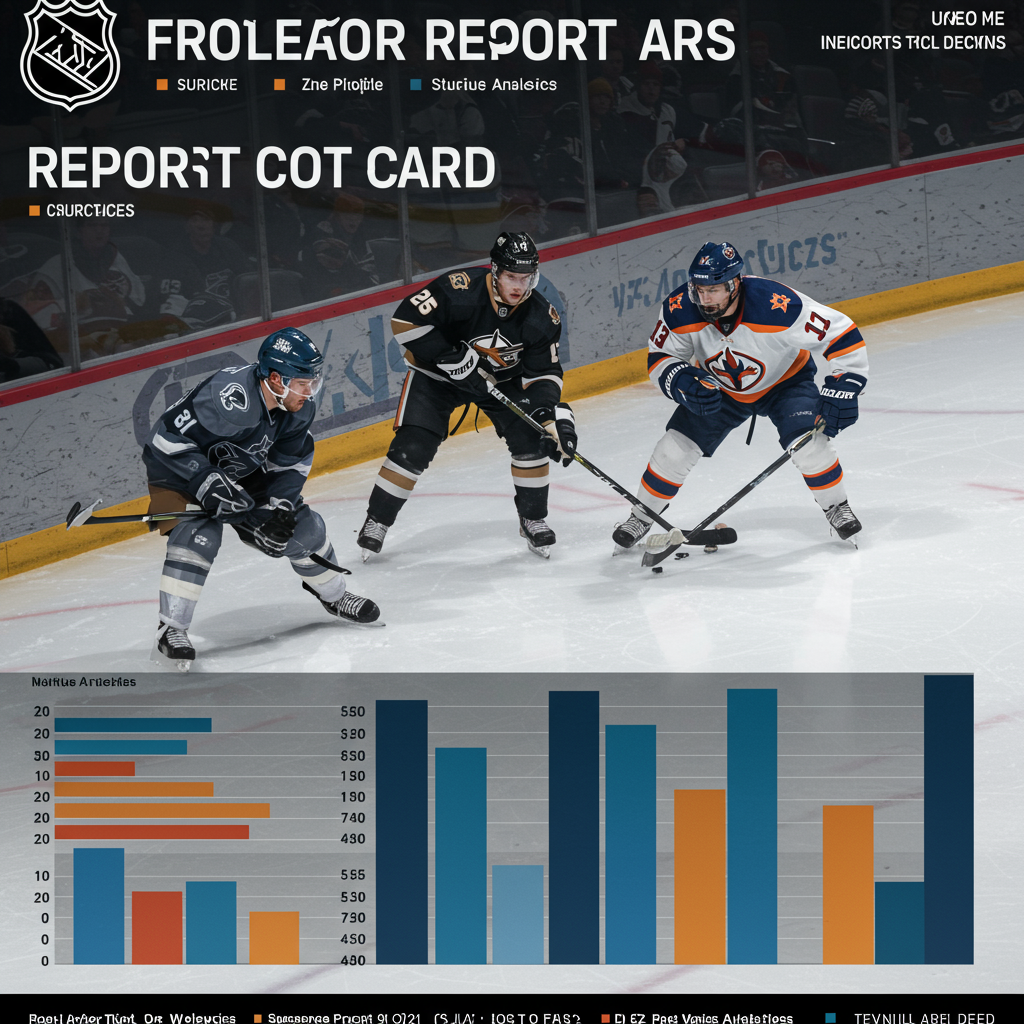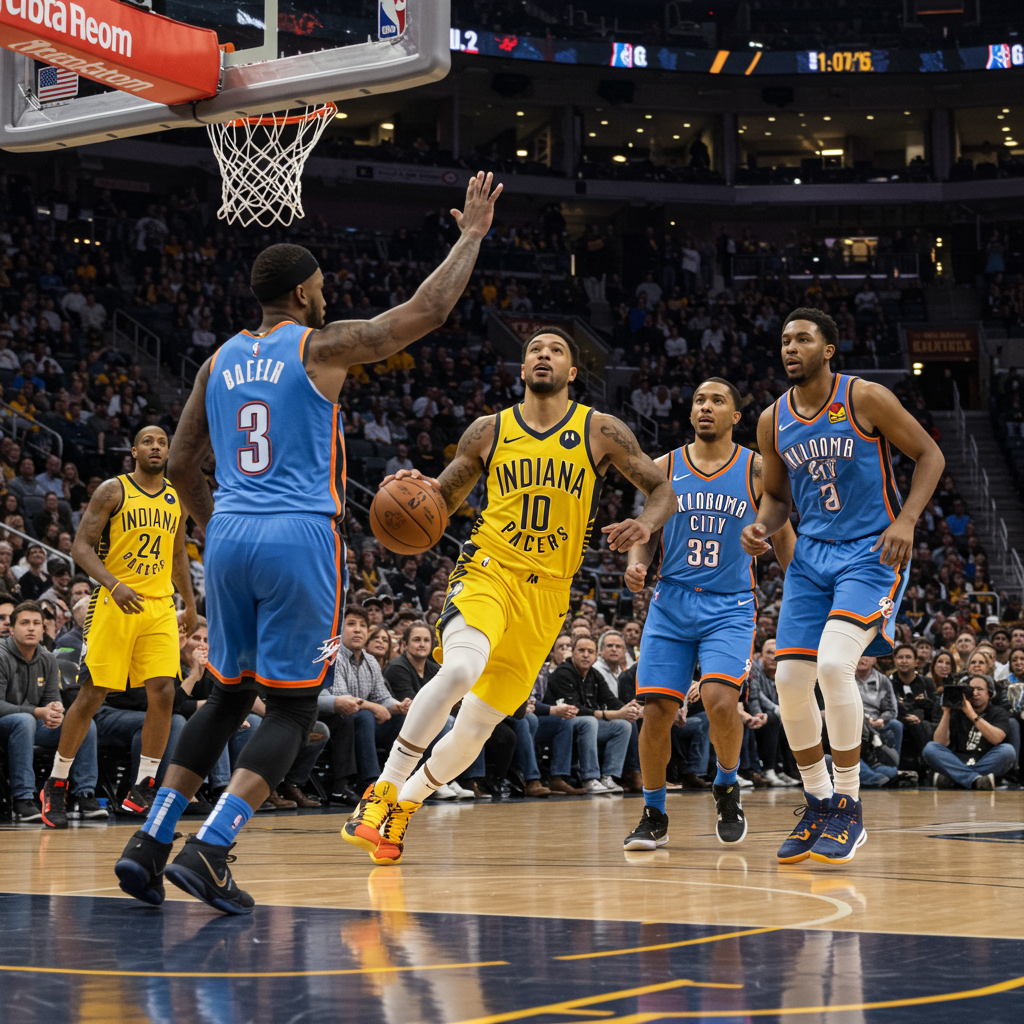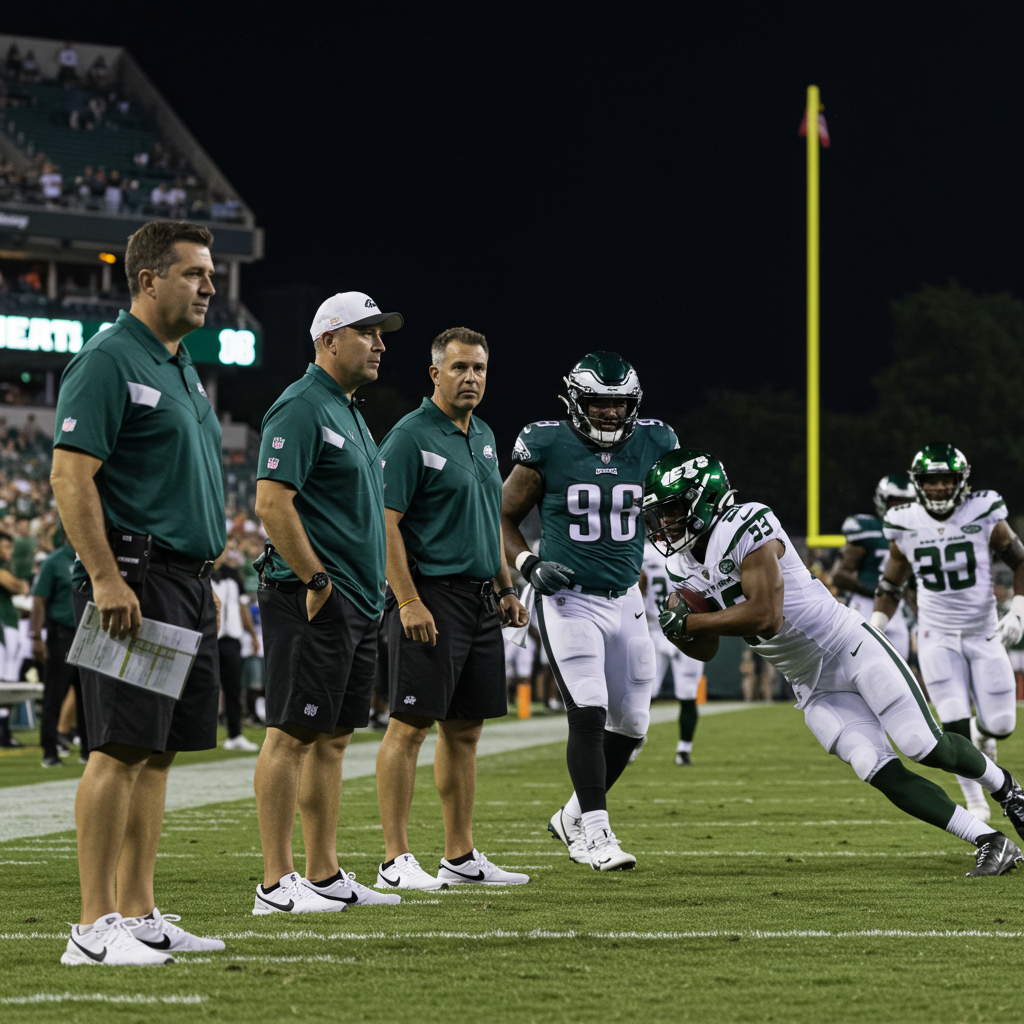The initial flurry of activity in NHL free agency has passed, leaving teams across the league with a mix of optimism, questions, and strategic planning for the road ahead. Just days into the official period, the market for top-tier impact players thinned quickly. To assess the early landscape, analysts have begun dissecting the key moves – not just free agent signings, but also significant trades and contract extensions completed since the final horn of the Stanley Cup Playoffs.
Evaluating these early offseason actions requires more than just counting new faces. Experts consider a team’s specific needs, their salary cap situation, and how effectively they leveraged their available resources. This analysis provides a snapshot, reflecting subjective assessments of whether teams meaningfully improved their roster, addressed critical weaknesses, or positioned themselves well for future success, all while navigating the complex cap environment. It’s a report card on the foundational steps taken before the dust fully settles on the summer.
Grading the Early Offseason Landscape
Subjectivity is inherent in grading team performance during the offseason. Each analyst approaches the task considering the unique context of a team’s competitive window – are they Cup contenders, playoff hopefuls, or firmly in a rebuild? The grades factor in salary cap flexibility, the value gained or lost in trades and signings, and how well moves align with a team’s stated goals. Re-signings of key restricted and unrestricted free agents are also weighed heavily, as retaining core talent is often as crucial as adding from the outside. The market this year wasn’t flooded with stars, influencing what was possible for many clubs. Looking ahead, the projected significant rise in the salary cap to $104 million in the coming years (as highlighted by analysis of the 2026 UFA class) adds another layer of strategic consideration, potentially making future offseasons even more impactful for teams positioned to spend.
A-Level Offseasons: Making Big Impacts
Only a select few teams earned top marks for their early summer work, signaling significant strategic wins or crucial roster fortification.
The Florida Panthers achieved an A+ by accomplishing what many thought impossible: retaining their key unrestricted free agents. Securing Sam Bennett, Aaron Ekblad, and Brad Marchand before they hit the open market ensures the Panthers maintain the core that propelled them to consecutive deep playoff runs. This decisive action solidifies their status as Eastern Conference favorites aiming for another Cup push.
Also earning an A+ were the Vegas Golden Knights. Their biggest need was scoring on the wing, and they addressed it emphatically by acquiring Mitch Marner via a sign-and-trade. Landing one of the league’s most productive wingers immediately elevates their offense, complementing their deep center group. While the loss of Alex Pietrangelo for the foreseeable future is a significant defensive blow, the acquisition of Marner was seen as a monumental win addressing their primary target.
The Carolina Hurricanes swung for the fences and largely connected, earning an A-. They orchestrated a sign-and-trade for defenseman K’Andre Miller, a significant acquisition, and then landed forward Nikolaj Ehlers on a six-year, $51 million deal. These moves bolster both their forward group and defensive corps, although finding a second-line center remains a question. Still, the potential impact of Miller and Ehlers positions Carolina firmly as a Cup contender.
The Utah Mammoth (formerly Coyotes) also garnered an A- for a particularly smart move. They acquired young star JJ Peterka without surrendering their coveted 2025 first-round pick. Peterka adds dynamic offensive talent to their growing collection of forwards. Alongside this headline trade, they made solid depth additions like Nate Schmidt, Brandon Tanev, and Vitek Vanecek at reasonable contract values, effectively filling out their roster as they transition to a new market.
Solid B-Level Moves: Smart Additions & Retention
A larger group of teams made sensible moves, improving their rosters or retaining key players without necessarily making league-altering splashes.
Teams landing in the B+ range demonstrated specific areas of success. The New Jersey Devils shored up their forward depth with additions like Evgenii Dadonov and Connor Brown, providing valuable support if the core stays healthy. The New York Islanders received credit for signaling a change in direction through trades and cost-effective extensions, although the Noah Dobson trade sparked debate. The New York Rangers made the K’Andre Miller trade, which was risky given he went to a rival, but added Vladislav Gavrikov on a substantial seven-year deal and secured valuable draft capital and a young defenseman in return. The Philadelphia Flyers were praised for acquiring Trevor Zegras without giving up a high price and adding depth pieces like Christian Dvorak, alongside strong draft selections, improving the team while maintaining future flexibility for 2026 when the salary cap is expected to rise significantly. The St. Louis Blues were active, adding veteran forwards Pius Suter and Nick Bjugstad and young defenseman Logan Mailloux via trade, also effectively removing Nick Leddy’s contract via waivers to San Jose.
Several teams received solid B grades for their efforts. The Colorado Avalanche didn’t make major waves in free agency but added veteran Brent Burns on a low base salary, a potentially high-value depth addition. The Dallas Stars navigated cap challenges effectively after adding Mikko Rantanen previously, earning high marks for securing Matt Duchene and Jamie Benn on discounted contracts, balancing their books while retaining key forwards. The Montreal Canadiens focused on trades (acquiring Noah Dobson, Zack Bolduc) rather than free agency, making shrewd depth signings that filled needs without overspending in a weak market. The Pittsburgh Penguins made sensible, cheap additions without long-term commitments, acknowledging their current financial constraints and focus on future trade opportunities. The San Jose Sharks wisely utilized their vast cap space on useful additions without handing out restrictive max-term contracts, a strategy aimed at building flexibly around future leader Macklin Celebrini. The Winnipeg Jets added veteran forwards like Jonathan Toews, Gustav Nyquist, Tanner Pearson, and Cole Koepke on one-year deals, providing depth and experience, though Nikolaj Ehlers’ departure and concerns about the team’s speed were noted.
Lower in this tier, the Detroit Red Wings earned a B-. While adding John Gibson, James van Riemsdyk, and Mason Appleton improved the overall roster, these moves weren’t seen as major needle-movers needed to significantly snap their long playoff drought. As GM Steve Yzerman indicated, significant upgrades, particularly a top-four defenseman and top-six winger, might still need to come via trade later in the summer, though the market for those types of players appears thin according to recent reports. Adding Gibson and expecting continued growth from young players like Simon Edvinsson and Marco Kasper seems to be the core of their strategy to build upon last year’s improved performance under coach Todd McLellan.
The Edmonton Oilers received a B-. Limited by cap space after re-signing key RFAs Evan Bouchard and Trent Frederic, they brought in Andrew Mangiapane and Curtis Lazar. These additions provide speed, scoring depth, and versatility but are unlikely to fully offset the losses the team incurred earlier in the offseason. Neither Mangiapane nor Lazar is a guaranteed top-six forward, leaving questions about Edmonton’s forward depth.
The Tampa Bay Lightning also received a B-. They made low-key depth additions and extensions, including Yanni Gourde, Pontus Holmberg, and Jakob Pelletier. Pelletier represents a smart buy-low deal fitting their budget. However, they failed to replace Nick Perbix or add a seventh defenseman and couldn’t shed enough salary to pursue any true needle-movers in free agency.
C-Level Performance: Addressing Needs, But Falling Short
Teams in the C range generally made moves that addressed some needs but left others glaringly open, or the moves themselves had significant question marks.
The Anaheim Ducks received a C+. Despite significant salary cap space, their most notable move was signing 33-year-old Mikael Granlund. While a fine player, this was seen as underwhelming given the possibilities they had to make a bigger splash in the market or via trade. Future improvements will likely need to come from within or via re-signing young RFAs like Lukas Dostal and Mason McTavish.
The Buffalo Sabres earned a C+. They addressed two needs by trading JJ Peterka for defenseman Michael Kesselring and winger Josh Doan. This was a good use of assets to acquire needed positions, but replacing Peterka’s scoring will be challenging. Depth additions like Justin Danforth, Alex Lyon, and Conor Timmins were valuable but not enough to significantly raise their grade, indicating more work is needed to truly upgrade the roster.
The Minnesota Wild were graded C+. They missed out on top free agent targets like Brock Nelson and Brock Boeser, pivoting instead to signing Vladimir Tarasenko on a one-year bet. Adding Nico Sturm helps with penalty kill and faceoffs, but this was not the splashy offseason fans hoped for after years of cap limitations from buyouts, leaving some disappointed.
The Vancouver Canucks received a C+. They added Evander Kane for a modest price and extended core players like Conor Garland, Brock Boeser, and Thatcher Demko. However, they failed to address a significant need at center, losing Pius Suter who could play the position. This remains a major hole that must be filled later in the summer or during the season.
Other teams receiving C grades made smaller, less impactful moves. The Seattle Kraken signed Ryan Lindgren to a substantial contract but failed to land an impact game-breaker the team desperately needs. Key RFAs remain unsigned, and Lindgren’s injury history raises concerns about his ability to sustain his defensive style over a four-year deal. Overall, Seattle’s offseason hasn’t significantly moved the needle. The Toronto Maple Leafs were also graded C, perceived as having gotten worse with Mitch Marner’s departure and no major additions yet. While additions like Nicolas Roy and Matias Maccelli could be shrewd, it represents a talent downgrade so far, despite good extensions for Matthew Knies and John Tavares. A significant trade could still improve their outlook. The Ottawa Senators received a C, making small, expected moves like adding Lars Eller and re-signing Claude Giroux and Nick Cousins. Trading for Jordan Spence could be solid, but the team still lacks another top-line scorer.
D-Level Report: Underwhelming or Missed Opportunities
Teams receiving the lowest grades were seen as having particularly disappointing offseasons, either by failing to address key needs, making questionable moves, or doing very little despite opportunities.
The Calgary Flames received a C-, continuing their rebuild but facing significant questions. They avoided overspending, which aligns with their strategy, but still need to re-sign Connor Zary. The biggest uncertainty is Rasmus Andersson, whose potential trade value might decrease if they start the season with him. Avoiding overspending was good, but the lack of action felt incomplete.
The Los Angeles Kings were given a meager C-, with analysts particularly critical of the defensive additions of Cody Ceci and Brian Dumoulin. While additions like Corey Perry improve the fourth line, the overall defensive picture caused concern, leading to a harsh assessment despite some internal optimism.
The Nashville Predators earned a C-. They were criticized for giving Nicolas Hague a contract perceived as well beyond reasonable expectation and failing to address the center group, the weakest in the league. While Nick Perbix was a good value signing, the overall activity was seen as insufficient to significantly improve the team.
The Washington Capitals received a C-. They made minor depth additions in Anthony Beauvillier and Declan Chisholm but failed to address their needs for a third-line center and top-six skill, despite reportedly pursuing Nikolaj Ehlers. The additions were not considered needle-movers for a team needing significant offensive help.
Falling into the D range signifies particularly underwhelming performances. The Chicago Blackhawks received a D for doing very little despite possessing over $20 million in cap space. While re-signing Ryan Donato was necessary, and André Burakovsky is intriguing, the overall inactivity, while perhaps aligned with a long-term rebuild by providing space for young players, wasn’t viewed as a productive or successful active offseason by analysts.
The Columbus Blue Jackets also received a D. Their grand plans to add a top-six scoring winger and top-four right-side defenseman never materialized. They ultimately re-signed Ivan Provorov to a massive seven-year, $59.5 million deal and added bottom-six forwards without significantly upgrading the roster compared to the veterans who departed. The failure to execute their initial goals resulted in a low grade.
Key Trends Shaping the Summer
The early days of the NHL offseason revealed a few key trends. First, the UFA market for top players was thin, leading many teams to pivot to trades or focus on re-signing their own players. Second, the increasing importance of the salary cap is evident; teams are making strategic decisions not just for the upcoming season but also positioning themselves for future cap growth. Rebuilds are prioritizing asset management over splashy signings, while contenders are taking calculated risks to push for the Cup. The focus has shifted, with trades becoming a more prevalent mechanism for significant roster change compared to the traditional free agency frenzy, mirroring trends seen in other leagues like the NBA, where a weak free agent class and cap complexities drove teams towards trades in their own recent Day 1 activity.
Looking Ahead: The Rest of the Offseason
While the initial wave has passed, the offseason is far from over. Teams with cap space may still pursue remaining free agents or look to make trades. Restricted free agent negotiations will continue, potentially leading to more extensions or even offer sheet drama. The trade market, though described as not robust currently, could heat up as teams re-evaluate needs after the draft and early free agency. For teams that received lower grades, there’s still opportunity to improve their standing before training camps open.
Frequently Asked Questions
How were the NHL team free agency grades determined in this analysis?
The grades were assigned by The Athletic’s NHL staff based on subjective assessments of each team’s early offseason moves, including free agency signings, trades, and re-signings. Analysts considered factors like the team’s specific needs, their salary cap situation, the value of players acquired or retained, and how well the moves aligned with the team’s competitive status (rebuild vs. contender). It’s a snapshot evaluation based on the perceived impact and strategy of the moves made since the end of the season.
Which NHL teams received the highest grades for their early offseason performance?
According to this analysis, four teams received A-level grades or higher. The Florida Panthers and Vegas Golden Knights both earned A+ grades for their significant successes in retaining key players (Panthers: Bennett, Ekblad, Marchand) and making a major acquisition (Golden Knights: Mitch Marner via sign-and-trade), respectively. The Carolina Hurricanes and Utah Mammoth both received A- grades for impactful moves like acquiring K’Andre Miller and Nikolaj Ehlers (Hurricanes) and landing JJ Peterka via trade while adding depth (Mammoth/Utah).
What common themes separated the highly-graded NHL teams from those with lower marks?
Highly-graded teams typically made moves that directly addressed significant needs with high-impact players or successfully retained core talent against expectations, all while demonstrating strategic alignment with their competitive window and managing cap space effectively. Lower-graded teams often failed to acquire needed impact players, made questionable contract or trade decisions, or remained largely inactive despite having cap space or roster holes, leading analysts to view their early offseasons as underwhelming or missed opportunities.
Conclusion
The initial phase of the NHL offseason provides a telling glimpse into each team’s strategy and execution. While the market for top free agents was limited this year, teams pursued upgrades and addressed needs through a mix of signings, trades, and re-signings. The top grades went to teams that made bold, impactful moves or achieved crucial retention goals, positioning themselves strongly for the upcoming season. Many others made sensible but less dramatic improvements. Meanwhile, lower-graded teams faced criticism for inaction, questionable decisions, or failing to capitalize on available resources. As the summer continues, further trades and signings will undoubtedly unfold, but these early grades set the narrative for how well each franchise navigated the crucial first steps of the 2025 offseason.
Word Count Check: 1568




